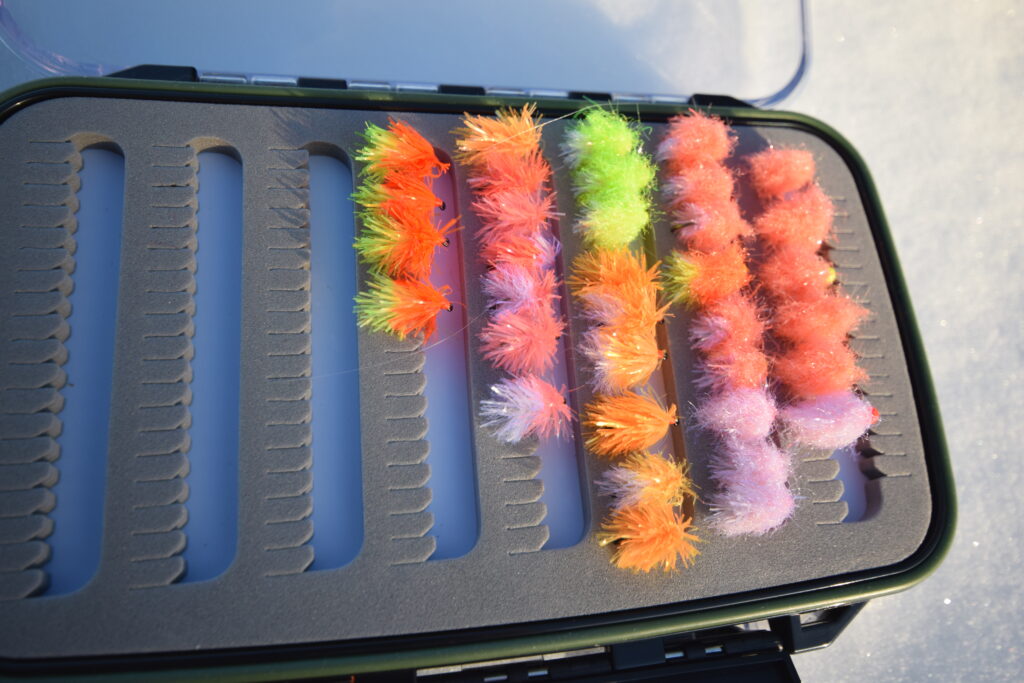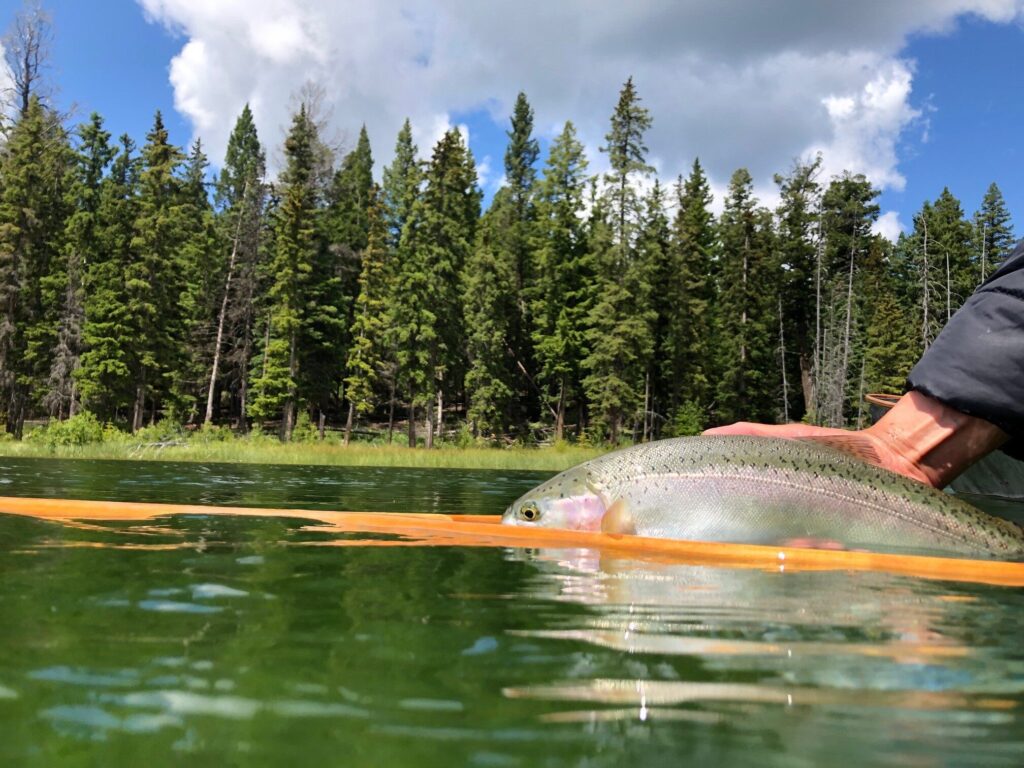The arrival of hot summer weather brings many changes to fish behaviour in local lakes. Fishing during this season is often referred to as the summer doldrums, but a little understanding of lake biology should improve your angling success.
The two most commonly asked questions this time of year are:
- What are trout feeding on during hot weather?
- Why do fish in some lakes taste muddy?
To answer these questions, we must understand the changes that are occurring within the lake itself. The sun has warmed shallow areas, and the majority of insect hatches (midges, mayflies, caddisflies, damselflies, and dragonflies) have occurred. Since the upper layers of water are now too warm for trout to live comfortably, they will seek cooler depths where both temperature and oxygen levels are more ideal. The diet of many trout in summer will thus typically consist of shrimp, immature dragonfly nymphs, leeches, and zooplankton.
Trout Food Sources in Summer
Shrimp are a staple because they are available at all times of the year. They require high levels of calcium in the water to maintain their chitinous exoskeleton, however, and are not found in every lake. Lakes with good shrimp populations are always very productive, and have the capability to grow big fish.
Dragonflies live up to four years as nymphs before emerging as adults. Nymphs can reach very large sizes, and trout actively seek them as a food source.

Leeches are also present throughout the year. When fully extended, they can reach 25 centimetres in length. Certainly a mouthful for any trout!

Zooplankton are the almost microscopic “water fleas” that you see if you fill a glass with lake water. Daphnia and Cyclops are two common orders of plankton found in B.C. lakes. Trout feed on Daphnia and Cyclops because they are found at all depths, are very nutritious, and are easily filtered through the gills and swallowed. They help impart the deep-orange colour to the flesh of trout. Unfortunately, it’s difficult for anglers to imitate these minute food items.

Remember that at this time of year, the shallows usually associated with good fishing will be too warm for trout during the day. It is only after the sun is off the water, and temperatures cool down, that the fish will actively feed. Big food items like dragonfly nymphs and leeches are very effective at this time.
“Muddy-Tasting” Trout
Also associated with summer weather is off-flavoured or “muddy” trout. This occurs in many of our local lakes, especially ones situated at lower elevations. The muddy flavour is not caused by a muddy lake bottom, but by blooms of blue-green algae that thrive in warm water under sunny weather. These blooms appear in the upper two to three metres of water like a carpet of short grass clippings, or spheres the size of small pinheads. The algae release certain chemical compounds that are absorbed through the skin of the trout, and accumulate in the fatty layer just under the skin. Trout will typically remain muddy-tasting until the fall, when algae growth lessens with the decreased daylight and lower water temperatures.
While fishing during this time of year can be more challenging, these tips should improve your angling success.
Author: Brian Chan, Fishing Advisor, Freshwater Fisheries Society of BC
